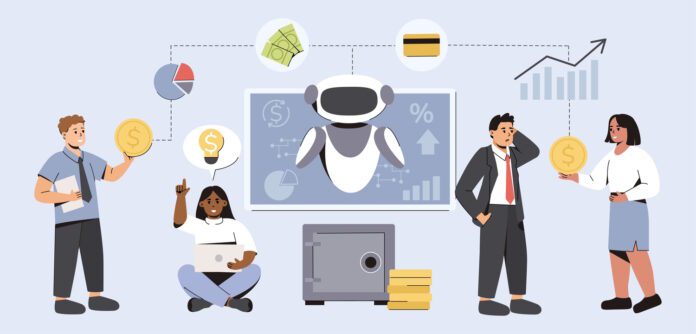The rapid advancement of artificial intelligence (AI) and automation is transforming industries and reshaping the workforce. As AI technology continues to evolve, it raises an important question: which professions will be replaced by artificial intelligence in the future? This comprehensive guide delves into the potential impact of AI on various professions, exploring both the opportunities and challenges it presents. We will examine specific job roles that are likely to be affected by AI, discuss the reasons behind this shift, and consider the broader implications for society and the economy.
Understanding AI and Its Capabilities
What is Artificial Intelligence?
Artificial intelligence refers to the simulation of human intelligence in machines that are programmed to think and learn like humans. AI systems can perform tasks such as problem-solving, decision-making, language understanding, and pattern recognition. The development of AI involves various subfields, including machine learning, natural language processing (NLP), computer vision, and robotics.
How AI is Transforming Industries
AI is transforming industries by automating routine tasks, enhancing decision-making processes, and enabling the creation of new products and services. From healthcare and finance to manufacturing and retail, AI is driving efficiency, reducing costs, and opening up new possibilities for innovation. As AI technology becomes more sophisticated, its impact on the workforce is expected to grow
Professions Likely to Be Replaced by AI
Several professions are particularly susceptible to automation due to the nature of their tasks. In this section, we will explore specific job roles that are likely to be replaced by AI in the future.

1. Administrative and Clerical Jobs
Overview:
Administrative and clerical jobs involve routine, repetitive tasks such as data entry, scheduling, and document management. These tasks are highly suitable for automation, making administrative roles vulnerable to AI replacement.
Examples of Jobs:
- Data Entry Clerks
- Receptionists
- Administrative Assistants
Reasons for Replacement:
- Repetitive Nature: Tasks that involve repetitive actions can be easily automated using AI and robotic process automation (RPA).
- Efficiency: AI systems can perform these tasks faster and with fewer errors than humans.
- Cost Savings: Automating administrative tasks reduces labor costs for organizations.
Impact and Considerations:
While AI can handle routine administrative tasks, it is essential to consider the impact on the workforce and provide opportunities for reskilling and upskilling. Human workers can be retrained to focus on more complex and value-added tasks that require critical thinking and interpersonal skills.
2. Manufacturing and Assembly Line Jobs
Overview:
Manufacturing and assembly line jobs involve the production and assembly of goods. These roles often require repetitive manual labor, making them prime candidates for automation through AI and robotics.
Examples of Jobs:
- Assembly Line Workers
- Machine Operators
- Quality Control Inspectors
Reasons for Replacement:
- Consistency and Precision: AI-powered robots can perform tasks with high precision and consistency, reducing defects and improving product quality.
- Safety: Automating hazardous tasks reduces the risk of workplace injuries and accidents.
- Productivity: AI systems can operate continuously without breaks, increasing productivity and efficiency.
Impact and Considerations:
The automation of manufacturing jobs has significant implications for the workforce. While it can lead to job displacement, it also creates opportunities for new roles in robot maintenance, programming, and oversight. Investing in workforce development and training programs is crucial to help workers transition to these new roles.
3. Retail and Customer Service Jobs
Overview:
Retail and customer service jobs involve interacting with customers, processing transactions, and managing inventory. AI technologies such as chatbots, virtual assistants, and automated checkout systems are increasingly being used to perform these tasks.
Examples of Jobs:
- Cashiers
- Customer Service Representatives
- Sales Associates
Reasons for Replacement:
- Cost Efficiency: Automated systems can handle customer interactions and transactions at a lower cost than human workers.
- 24/7 Availability: AI-powered systems can operate around the clock, providing continuous customer support and service.
- Personalization: AI can analyze customer data to provide personalized recommendations and experiences.
Impact and Considerations:
The automation of retail and customer service jobs can improve customer experiences and streamline operations. However, it also raises concerns about job displacement. Organizations should focus on creating new roles that leverage human skills, such as customer relationship management and personalized service.

4. Transportation and Logistics Jobs
Overview:
Transportation and logistics jobs involve the movement of goods and people. Advances in AI and autonomous vehicle technology are transforming this sector, with the potential to replace certain job roles.
Examples of Jobs:
- Truck Drivers
- Delivery Drivers
- Warehouse Workers
Reasons for Replacement:
- Autonomous Vehicles: Self-driving trucks and delivery drones can transport goods more efficiently and reduce the need for human drivers.
- Route Optimization: AI can optimize delivery routes to save time and fuel, improving overall logistics efficiency.
- Warehouse Automation: AI-powered robots can handle tasks such as picking, packing, and sorting in warehouses.
Impact and Considerations:
The adoption of autonomous vehicles and AI in logistics can lead to significant cost savings and operational efficiencies. However, it also poses challenges for the workforce. Policymakers and industry leaders must work together to address the social and economic implications of job displacement and support workforce transition initiatives.
5. Financial Services Jobs
Overview:
Financial services jobs involve tasks such as data analysis, transaction processing, and customer advisory services. AI technologies like algorithmic trading, robo-advisors, and fraud detection systems are increasingly being used in this sector.
Examples of Jobs:
- Bank Tellers
- Financial Analysts
- Accountants
Reasons for Replacement:
- Data Analysis: AI can analyze large volumes of financial data quickly and accurately, identifying trends and making predictions.
- Automation of Transactions: Routine financial transactions can be automated, reducing the need for human intervention.
- Enhanced Security: AI-powered fraud detection systems can identify suspicious activities and prevent financial crimes.
Impact and Considerations:
AI can enhance the efficiency and security of financial services, but it also poses challenges for workers in the sector. Financial professionals will need to adapt by acquiring new skills in AI, data analysis, and cybersecurity to remain competitive in the evolving job market.
Professions Less Likely to Be Replaced by AI
While many professions are susceptible to automation, some roles are less likely to be replaced by AI due to their complexity, creativity, and reliance on human intuition and empathy.
1. Healthcare Professionals
Overview:
Healthcare professionals, including doctors, nurses, and therapists, perform tasks that require human empathy, critical thinking, and complex decision-making. While AI can assist with diagnostics and treatment planning, it cannot replace the human touch in patient care.
Reasons for Resilience:
- Empathy and Compassion: Human healthcare providers offer emotional support and empathy that AI cannot replicate.
- Complex Decision-Making: Medical decisions often involve nuanced judgment and ethical considerations.
- Patient Interaction: Building trust and rapport with patients is a critical aspect of healthcare.
Future Outlook:
AI will complement healthcare professionals by providing tools for diagnostics, treatment planning, and patient monitoring. However, the core responsibilities of healthcare providers will remain human-centered.
2. Creative Professionals
Overview:
Creative professionals, such as artists, writers, musicians, and designers, rely on imagination, originality, and emotional expression. While AI can generate creative content, it lacks the ability to create truly original and emotionally resonant works.
Reasons for Resilience:
- Originality: Human creativity involves the generation of unique ideas and concepts that AI cannot fully replicate.
- Emotional Connection: Creative works often evoke emotions and connect with audiences on a personal level.
- Subjectivity: Artistic judgment and aesthetic preferences are subjective and vary among individuals.
Future Outlook:
AI will serve as a tool for creative professionals, offering new ways to enhance and augment their work. However, the essence of human creativity will continue to be irreplaceable.
3. Educators and Trainers
Overview:
Educators and trainers play a vital role in shaping the minds of learners, providing personalized instruction, and fostering critical thinking. While AI can support educational activities, it cannot replace the human element of teaching and mentorship.
Reasons for Resilience:
- Personalized Instruction: Effective teaching involves understanding individual learning styles and adapting instruction accordingly.
- Mentorship and Guidance: Educators provide mentorship, support, and encouragement that are essential for student development.
- Interactive Learning: Classroom interactions and discussions enhance learning experiences.
Future Outlook:
AI will enhance education by providing personalized learning tools, automating administrative tasks, and offering data-driven insights. However, the role of educators in guiding and inspiring students will remain essential.

Preparing for the Future Workforce
As AI continues to transform the job market, it is crucial to prepare for the future workforce by focusing on education, reskilling, and adapting to new roles.
1. Emphasizing Education and Lifelong Learning
Overview:
Education systems must evolve to equip individuals with the skills needed for the AI-driven future. Emphasizing STEM (science, technology, engineering, and mathematics) education, critical thinking, and problem-solving skills is essential.
Strategies:
- Curriculum Updates: Integrate AI and technology-related subjects into educational curricula.
- Lifelong Learning: Encourage continuous learning and professional development throughout one’s career.
- Collaboration with Industry: Partner with businesses to align educational programs with industry needs.
2. Reskilling and Upskilling
Overview:
Workers in roles susceptible to automation must be provided with opportunities to reskill and upskill, enabling them to transition
to new roles and industries.
Strategies:
- Training Programs: Develop and promote training programs focused on in-demand skills such as AI, data analysis, and cybersecurity.
- Government Initiatives: Implement government-led initiatives to support workforce reskilling and job placement.
- Employer Support: Encourage employers to invest in employee development and provide resources for learning and growth.
3. Adapting to New Roles
Overview:
The rise of AI will create new job roles that require a blend of technical and human-centric skills. Workers must be adaptable and open to exploring these emerging opportunities.
Strategies:
- Identifying New Roles: Monitor industry trends to identify emerging job roles and skill requirements.
- Career Counseling: Provide career counseling and guidance to help individuals navigate the changing job market.
- Encouraging Innovation: Foster a culture of innovation and creativity in the workplace to explore new business models and opportunities.
Conclusion
The future of work is being reshaped by artificial intelligence, with significant implications for various professions. While many roles are susceptible to automation, others will continue to thrive due to their reliance on human creativity, empathy, and complex decision-making. As we navigate this transformation, it is essential to focus on education, reskilling, and adapting to new roles to ensure a resilient and dynamic workforce. By embracing AI as a tool for enhancement rather than a replacement, we can harness its potential to drive innovation and improve our lives.
Useful Links
- World Economic Forum on Future of Jobs
- McKinsey on AI and the Future of Work
- Forbes on AI and Job Displacement
- Harvard Business Review on Reskilling Workforce
By understanding the impact of AI on various professions and preparing for the future workforce, we can navigate the challenges and opportunities presented by this transformative technology. Stay tuned for more in-depth articles and updates on the latest trends and advancements in artificial intelligence and the future of work.



